High Altitude Tiger Salamanders
Looking at high-elevation Tiger Salamanders in Southwestern Colorado
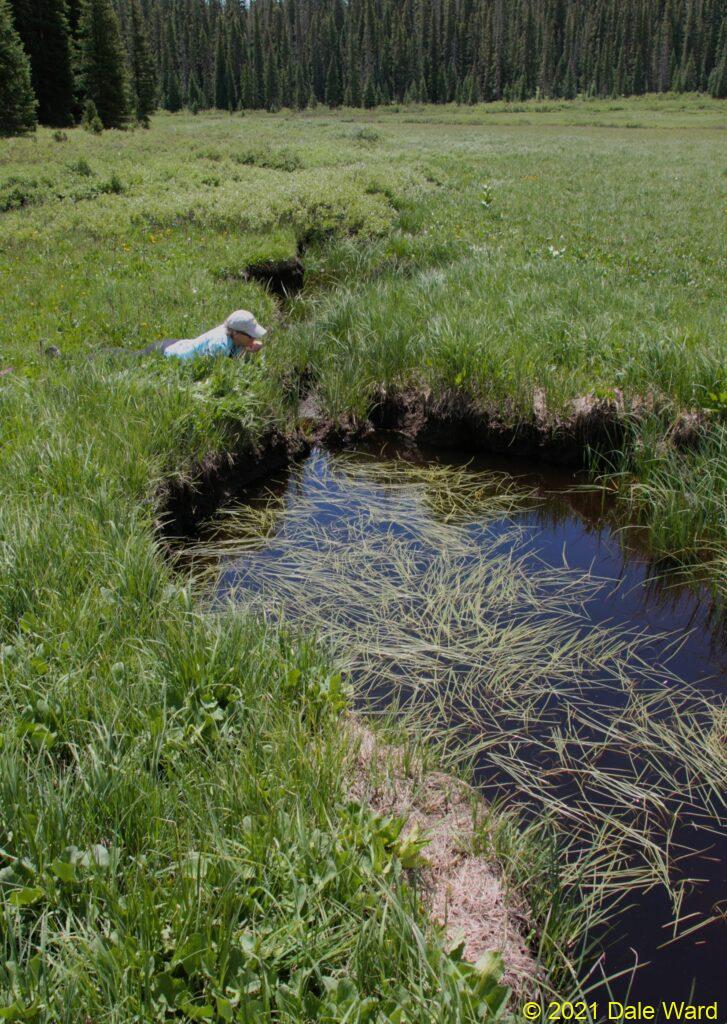 Laurie watching Tiger Salamander larvae in paradise
Laurie watching Tiger Salamander larvae in paradise
My local, lower elevation Tiger Salamander pools this year don’t seem to have larvae in them, probably because of the drought. That is an understatement, I guess. Honestly, a lot of them are bone dry.
So Laurie and I decided to go up higher into the San Juans Mountains to see how those pools were fairing.
We went to some mountain pools at about 10,500 feet. In normal years, this site is a series of very small pools, isolated in a large, damp alpine meadow. Last year it was very dry up there, as well. There was only one small, mostly dry, pool, with no visible larvae.
Since this year has been drier still down where we are at about 6500 feet, we were expecting it to be dry up there, too. Not the case! The pools had water in them this year. And larvae!
The largest pool was murky, with very poor visibility. I did see a large Salamander (3-4 inches) dart away in the pool. I think it was a larva, though I couldn’t get that good-enough a look to be certain.
If that’s correct, then I’m guessing it might have been a neotenic larva. That’s a young Salamander that decides not to metamorphose into its adult form, but rather stay in its larval form. They can spend their whole lives in a larval form, just growing and living the Life Aquatic. Doing the Peter-Pan thing, I guess.
The next pools in the series were much less murky, and had numerous small Salamander larva in them.
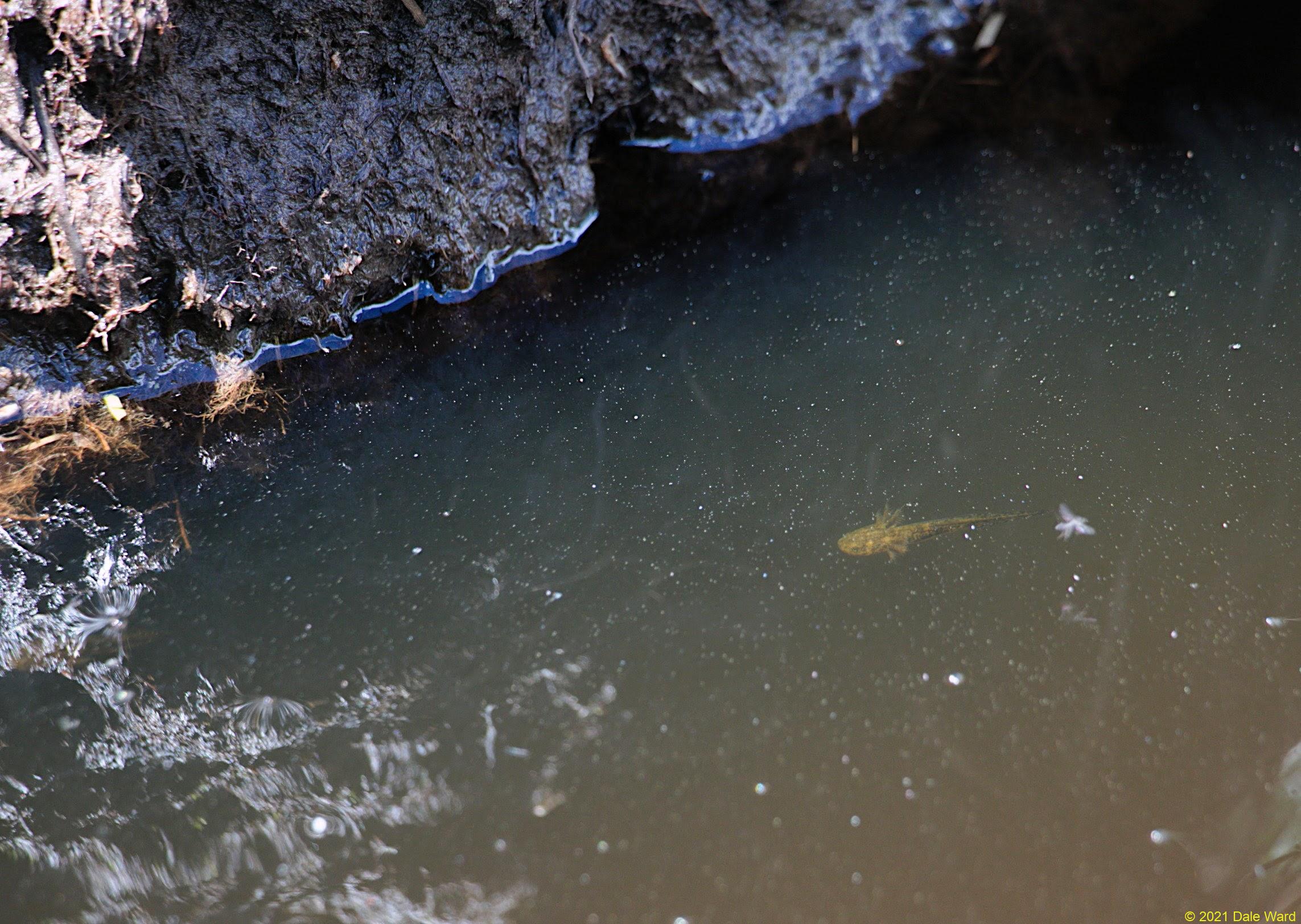 Tiger Salamander larva hovering near the edge of the pool These guys were pretty small, only about an inch or so long.
Tiger Salamander larva hovering near the edge of the pool These guys were pretty small, only about an inch or so long.
We belly crawled over to the edge of one of the pools to get a better look at the larvae.
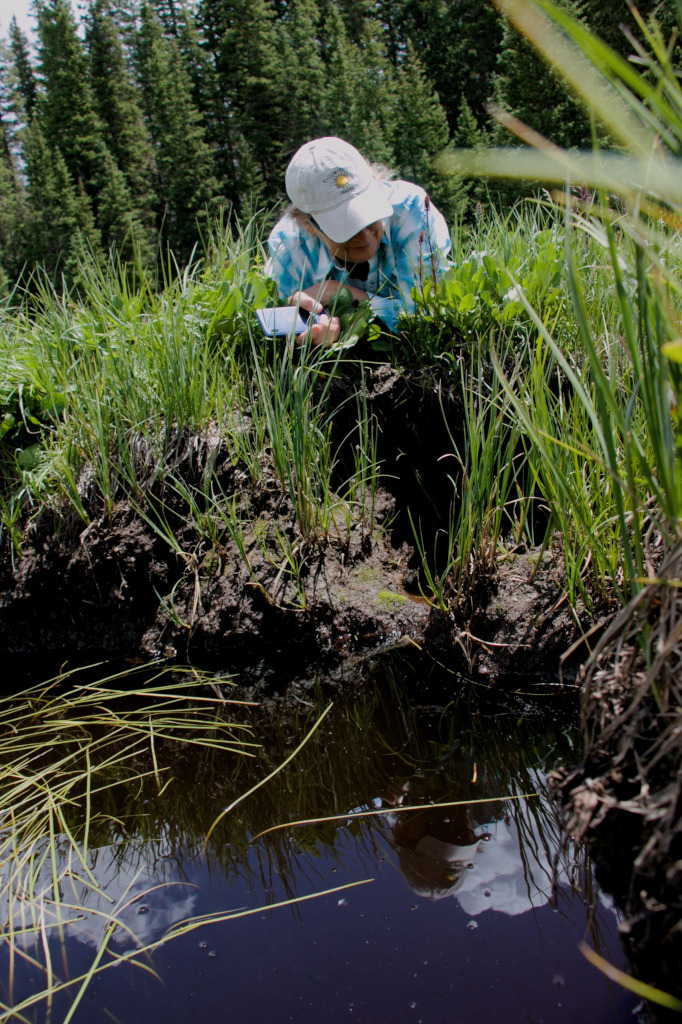 Laurie watches Tiger Salamander larvae
Laurie watches Tiger Salamander larvae
These larvae were small - probably a little bit less than an inch long. They did not have legs yet, though some looked to have the little fleshy spikes that were the beginnings of limbs.
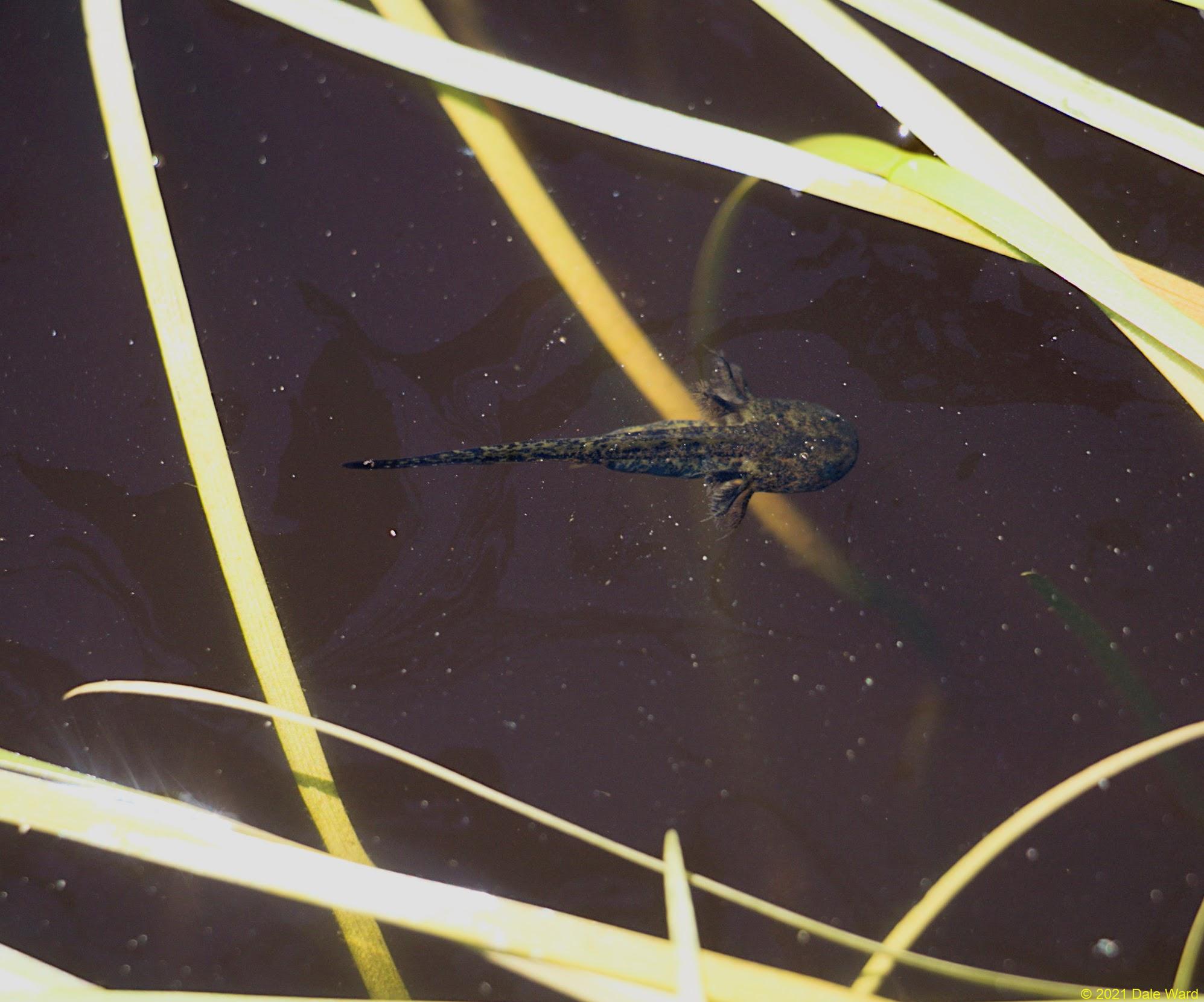 Tiger Salamander larva. Their limbs are just the barest spikes at this point.
Tiger Salamander larva. Their limbs are just the barest spikes at this point.
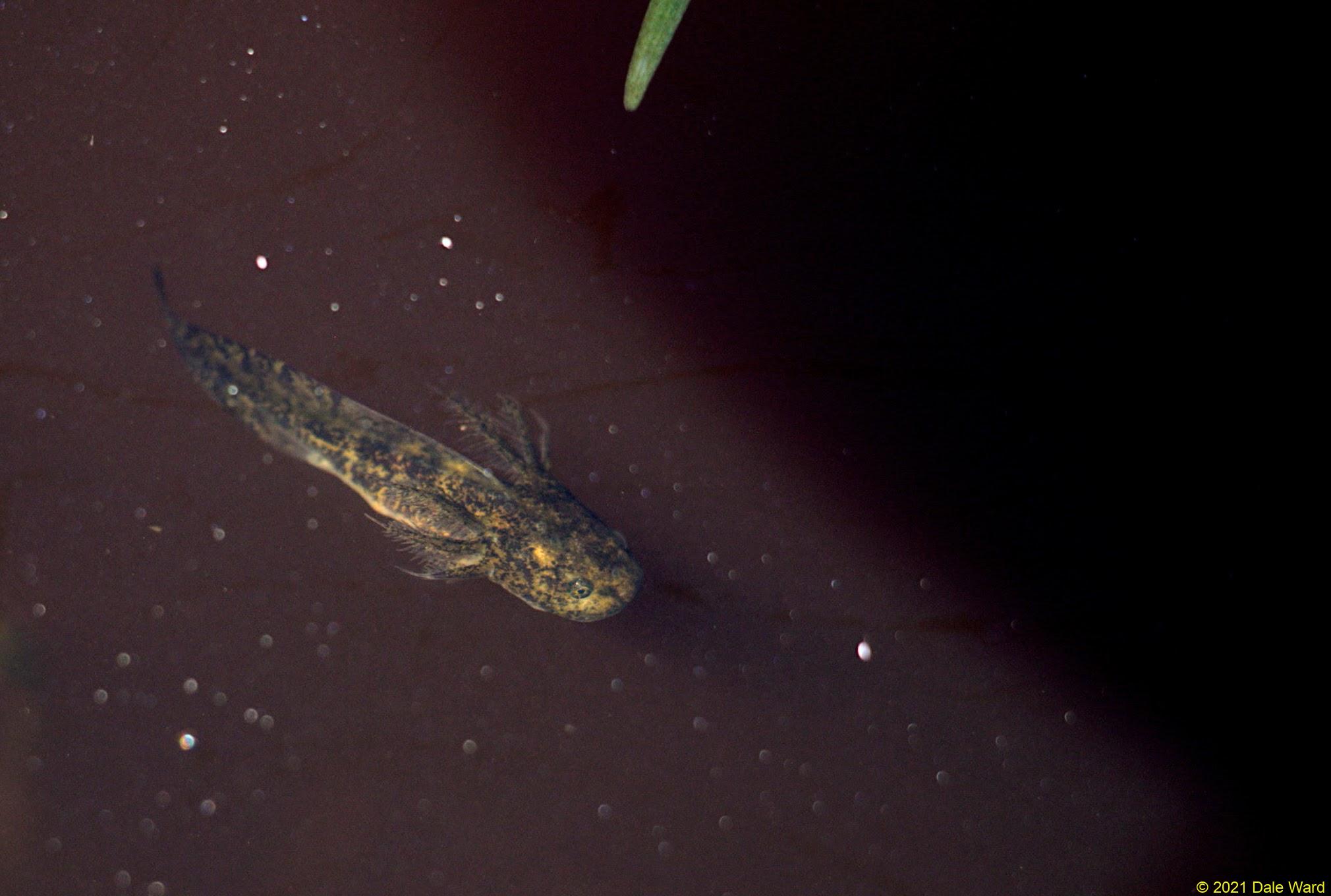 Tiger Salamander larva floats just below the surface of the water. Really nice view of the larva’s gills, you can see all of the little filaments on them.
Tiger Salamander larva floats just below the surface of the water. Really nice view of the larva’s gills, you can see all of the little filaments on them.
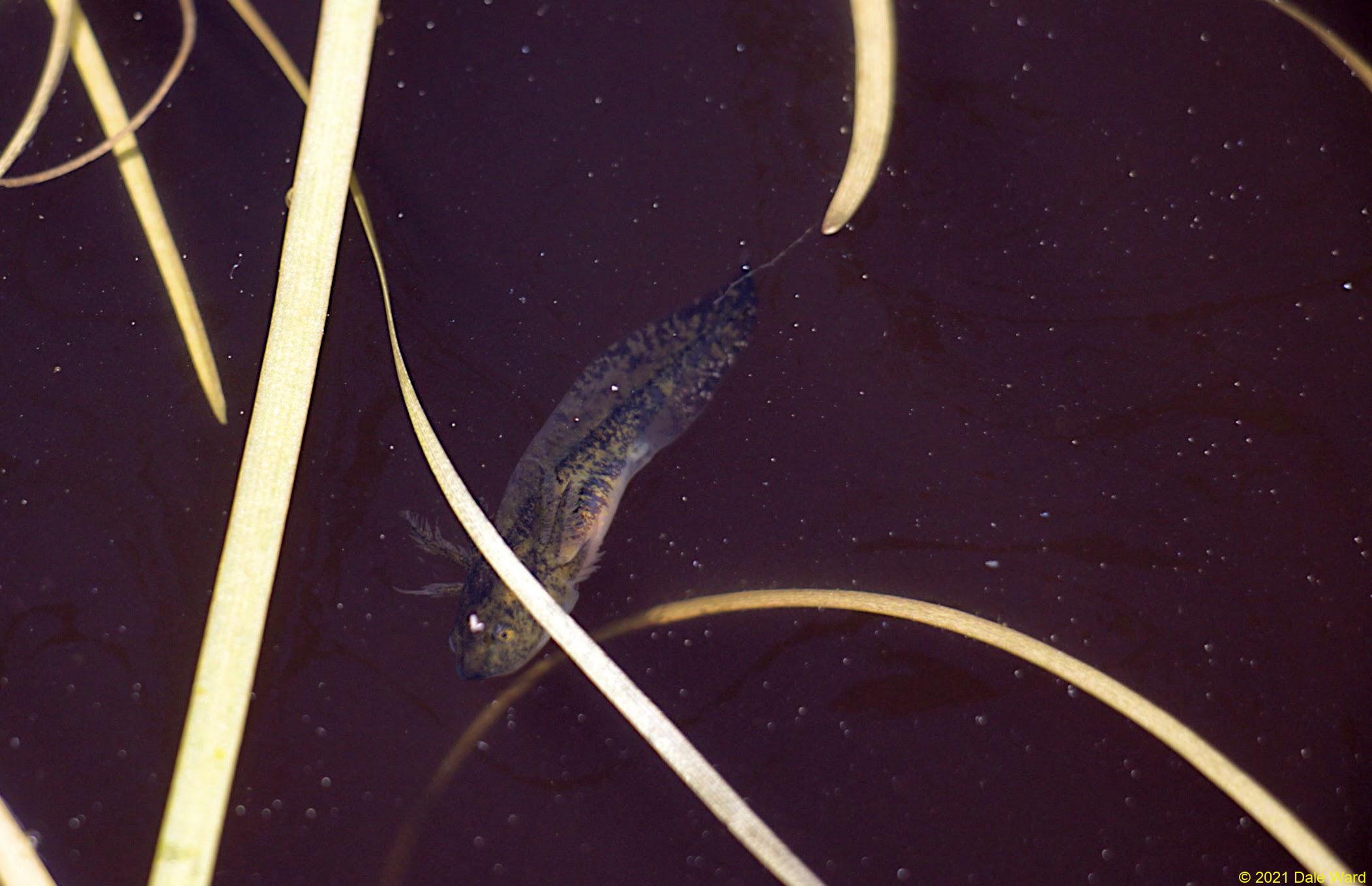 Tiger Salamander larva swims through the aquatic vegetation.
Tiger Salamander larva swims through the aquatic vegetation.
I saw a two larvae coming to the surface to gulp air. It’s interesting that they can breathe air at this early stage of their development.
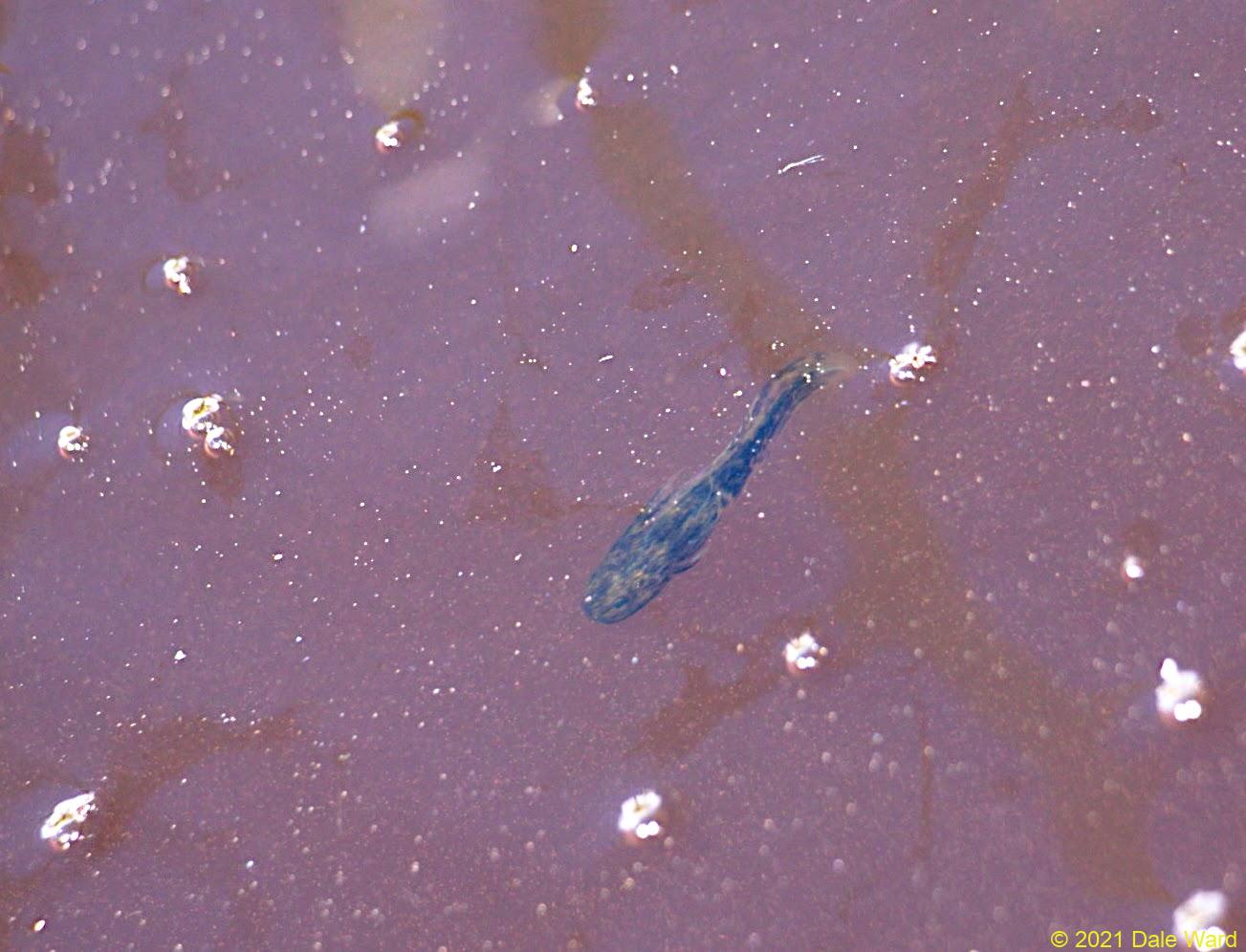 Tiger Salamander larva darts away after getting a quick breath of air at the surface of the water. Look at the way its gills fold back against its body as it swims.
Tiger Salamander larva darts away after getting a quick breath of air at the surface of the water. Look at the way its gills fold back against its body as it swims.
The larvae spent most of their time floating just below the surface of the water, catching the sunlight so that we could see golden flecks in them They were quite beautiful against the dark water.
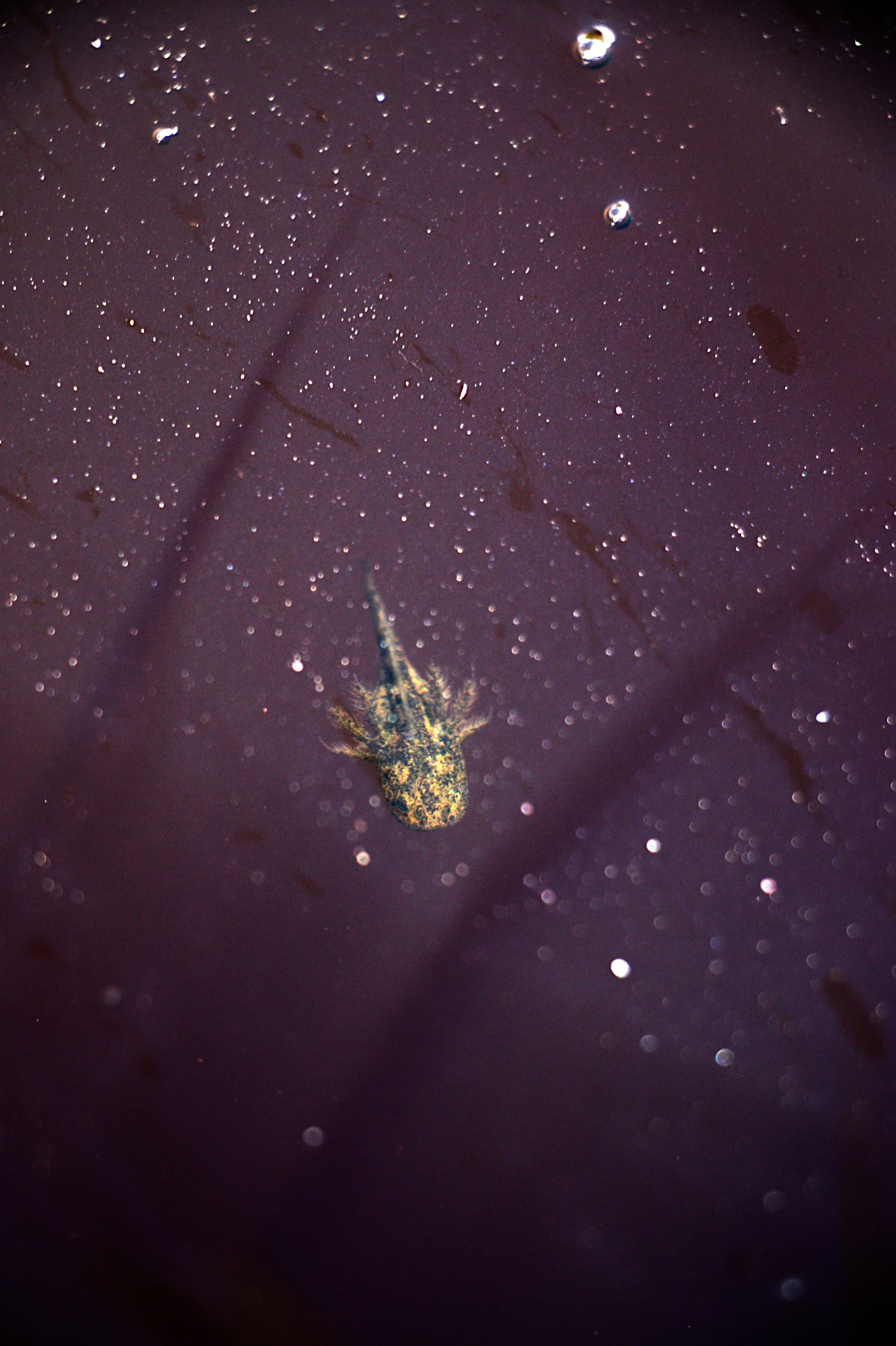 Tiger Salamander larva, floating just below the surface of the water
Tiger Salamander larva, floating just below the surface of the water
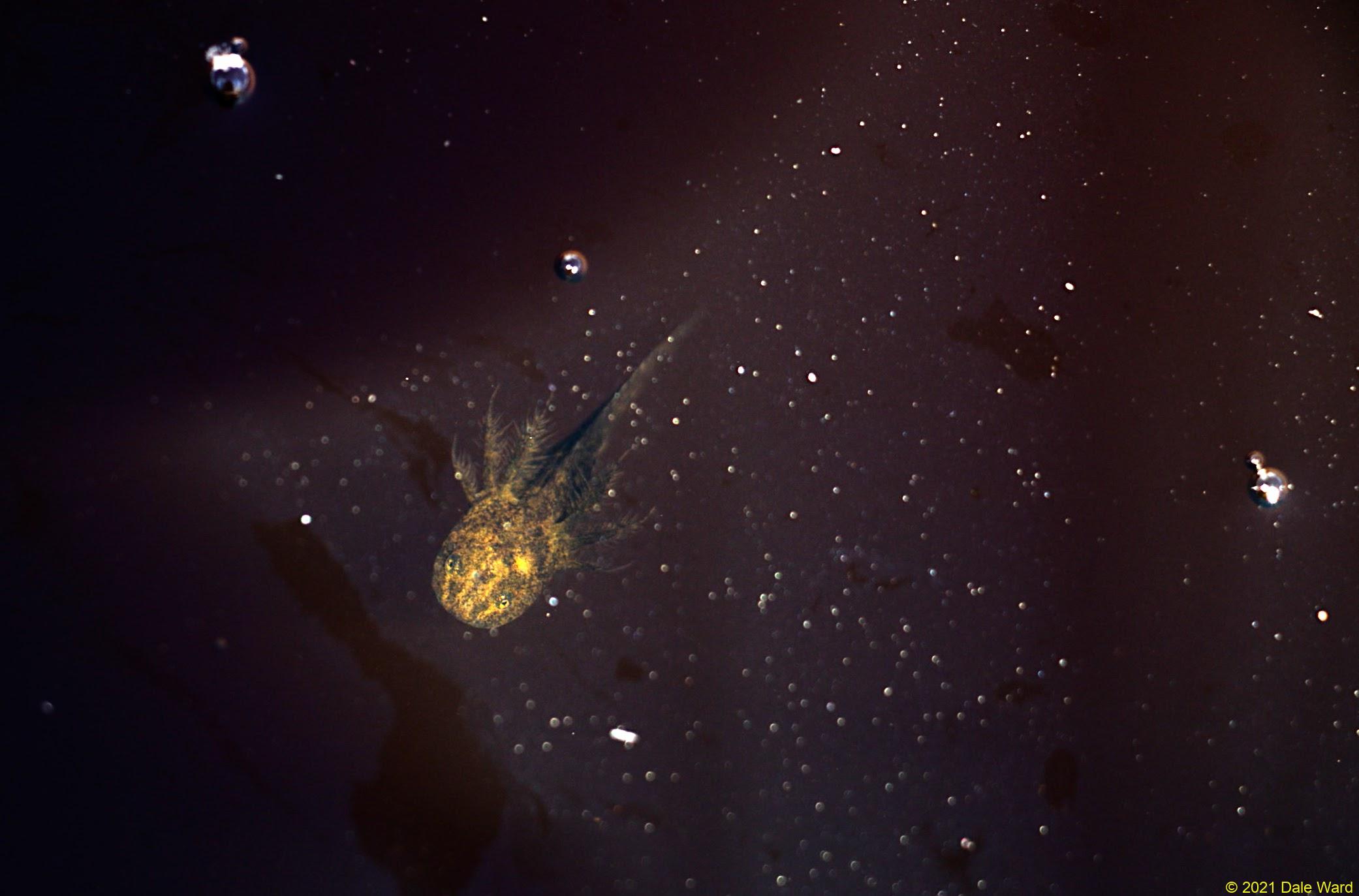 Tiger Salamander larva catching the sun in a just-so manner.
Tiger Salamander larva catching the sun in a just-so manner.
It’s interesting that I didn’t see large larvae in these more-clear pools, and that I didn’t see small larvae in the first, cloudy pool.
Assuming I correctly identified the neotenic larva in the first pool, and that there really were no small larvae there…I wonder if neotenic larvae exclude smaller, young-of-the year larvae.
Tiger Salamanders are cannibals - they even have a ‘cannibal morph’ that specializes meat-eating. So it’s pretty easy to imagine a mechanism where larger larvae could exclude smaller ones.
If that’s true, then I wonder if the more ephemeral pools are the ones that tend to be the most productive of larval Salamanders on a year-to-year basis. If the more recently dried-out pools are better places for young-of-the-year larval Salamanders because they are less likely to end up as food for larger, neotenic larvae from the previous year.
There must be absolutely fascinating interplays between pond drying, neotenic and new larvae, and the Ambystoma Tigrinum Virus, an Iridovirus that affects the Salamanders.
Need to read up on it some more, I guess.